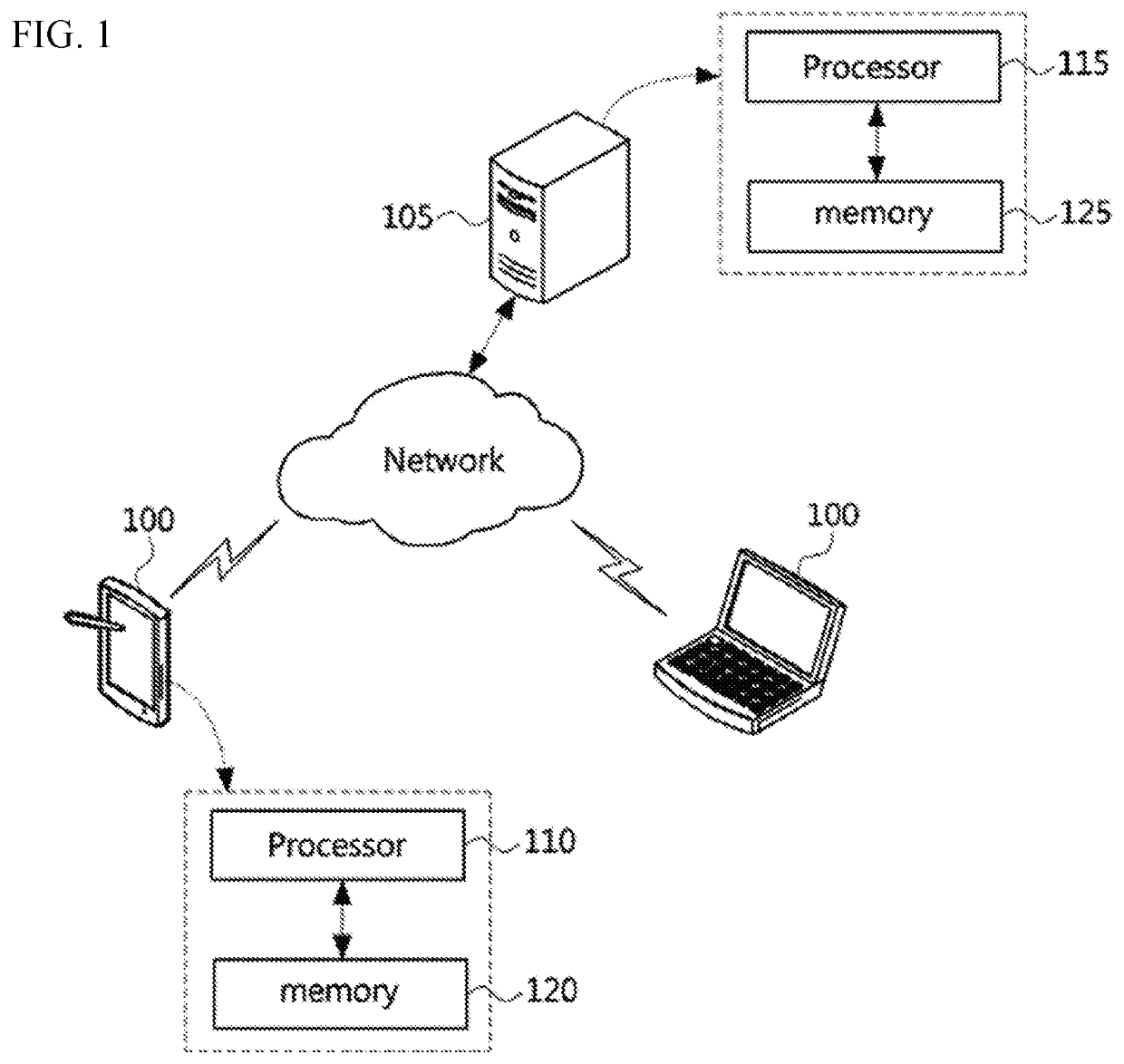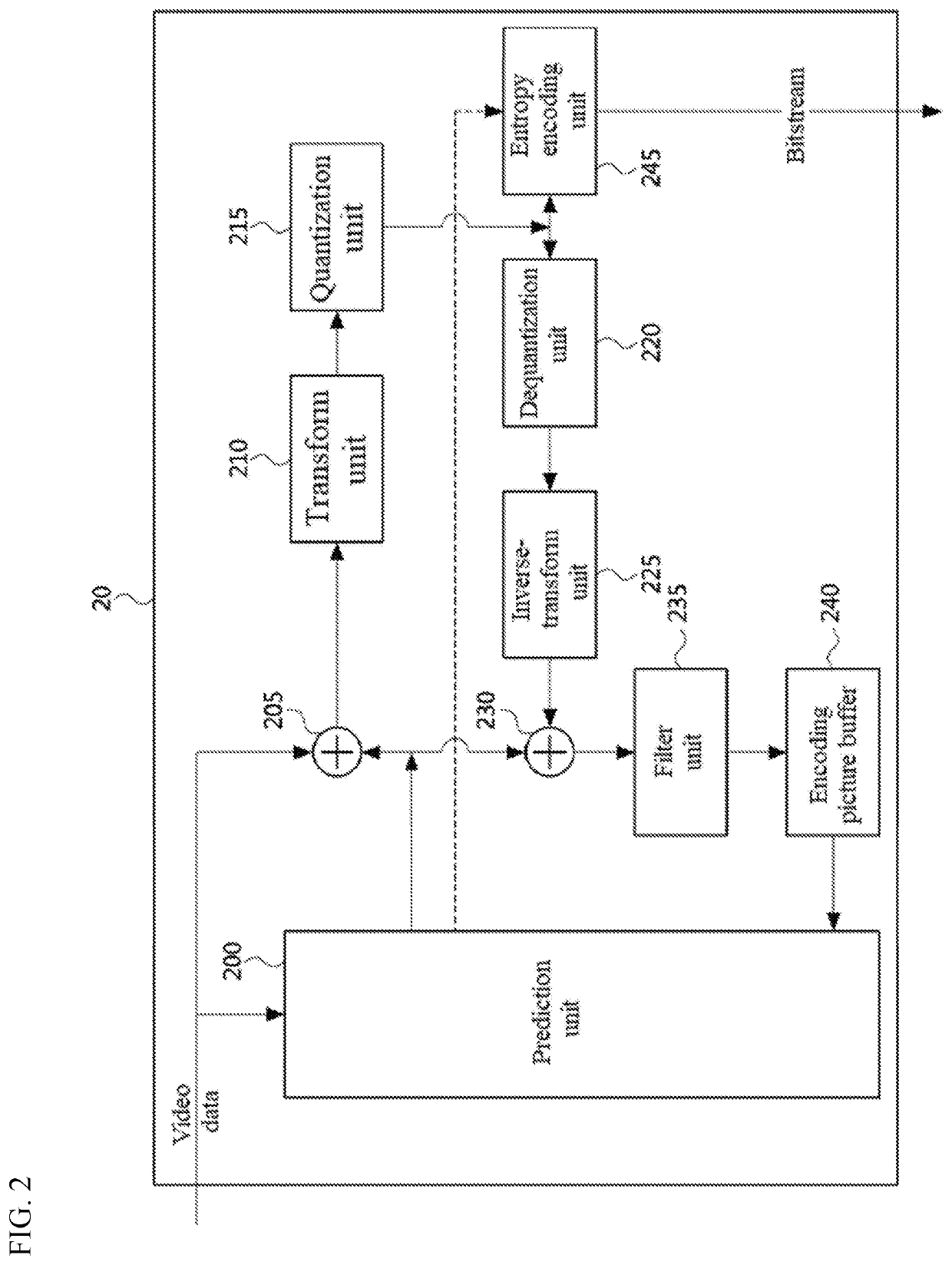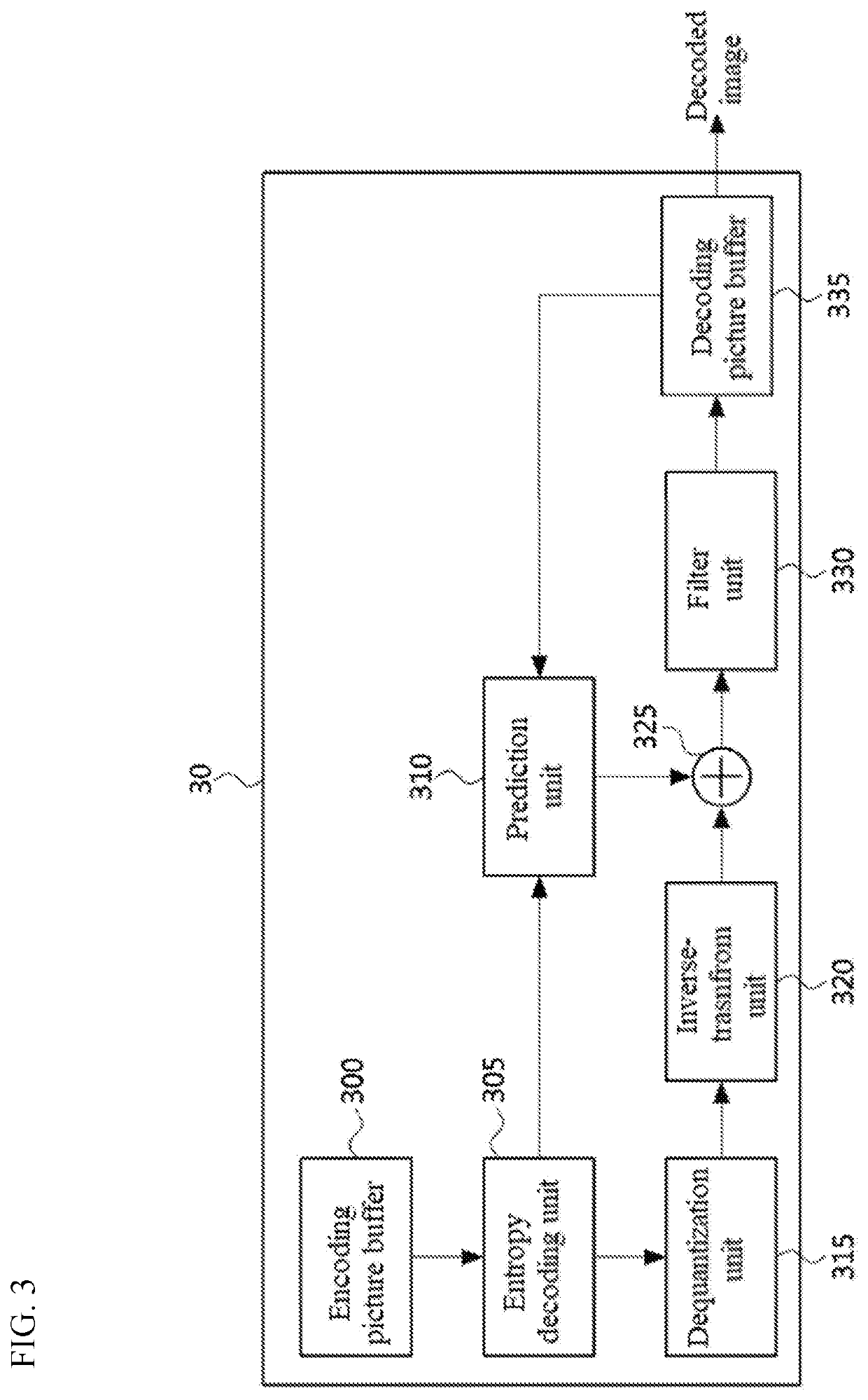In-loop filtering method according to adaptive pixel classification standard
a filtering method and filtering technology, applied in the field of in-loop filtering method according to an adaptive pixel classification standard, can solve the problems of restricted band offset and offset value by using the conventional edge offs
- Summary
- Abstract
- Description
- Claims
- Application Information
AI Technical Summary
Benefits of technology
Problems solved by technology
Method used
Image
Examples
first embodiment
[0161]First, according to relative classification according to an embodiment of the present invention, three samples are not selected according to any one direction shown in FIG. 8, and a plurality of neighboring samples selected regardless of a direction may be used.
[0162]Describing by referring to FIG. 8 again, classification into categories may be performed by comparing sizes of a pixel value of a current sample C_sample and pixel values of neighboring samples N_sample1, N_sample2, . . . , and N_sample8 neighboring the current sample.
[0163]For example, when a case where a pixel value of a current sample is greater than those of eight neighboring samples N_sample1, N_sample2, . . . , and N_sample8 neighboring the current sample is equal to or greater than a preset threshold times (or when current sample is greater in all cases), the current sample may be classified into a first category.
[0164]Also, when a case where a pixel value of a current sample is equal to or smaller than tho...
second embodiment
[0171]According to relative classification according to an embodiment of the present invention, rather than performing classification into categories according to any one direction shown in FIG. 8, classification into categories may be performed by additionally using a plurality of directions that are parallel to the direction of FIG. 8.
[0172]For example, when classification into categories is performed by comparing a pixel value of a current sample with pixel values of neighboring samples according to a horizontal direction 86 of FIG. 8, comparing with pixel values of samples determined according to a plurality of directions parallel to the horizontal direction 86 may be additionally performed. In detail, as directions parallel to the horizontal direction 86, a direction passing a first sample N_sample1, a second sample N_sample2, and a third sample N_sample3, and a direction passing a sixth sample N_sample6, a seventh sample N_sample7, and an eighth sample N_sample8 may be additio...
third embodiment
[0174]According to relative classification according to an embodiment of the present invention, classification may be performed by using a pixel value of a current sample, pixel values of neighboring samples, and a pixel value gradient between the current sample and the neighboring samples.
[0175]When two neighboring samples N_sampleA and N_sampleB are selected based on the current pixel C_sample according to a direction of FIG. 8, classification into categories may be performed according to a pixel value gradient.
(N_sampleB<C_sampleN_sampleA) [Equation 7]
(N_sampleB=C_sampleN_sampleA) [Equation 8]
(N_sampleB<C_sample=N_sampleA) [Equation 9]
[0176]Referring to relations of the Equations 7 to 9, it may be confirmed that a gradient of pixel values of three samples according to a direction of FIG. 8 increases. Accordingly, when relations between a current sample and neighboring samples satisfy Equation 7, 8 or 9, classification into a first category may be performed.
(N_sampleB>...
PUM
 Login to View More
Login to View More Abstract
Description
Claims
Application Information
 Login to View More
Login to View More - R&D
- Intellectual Property
- Life Sciences
- Materials
- Tech Scout
- Unparalleled Data Quality
- Higher Quality Content
- 60% Fewer Hallucinations
Browse by: Latest US Patents, China's latest patents, Technical Efficacy Thesaurus, Application Domain, Technology Topic, Popular Technical Reports.
© 2025 PatSnap. All rights reserved.Legal|Privacy policy|Modern Slavery Act Transparency Statement|Sitemap|About US| Contact US: help@patsnap.com



